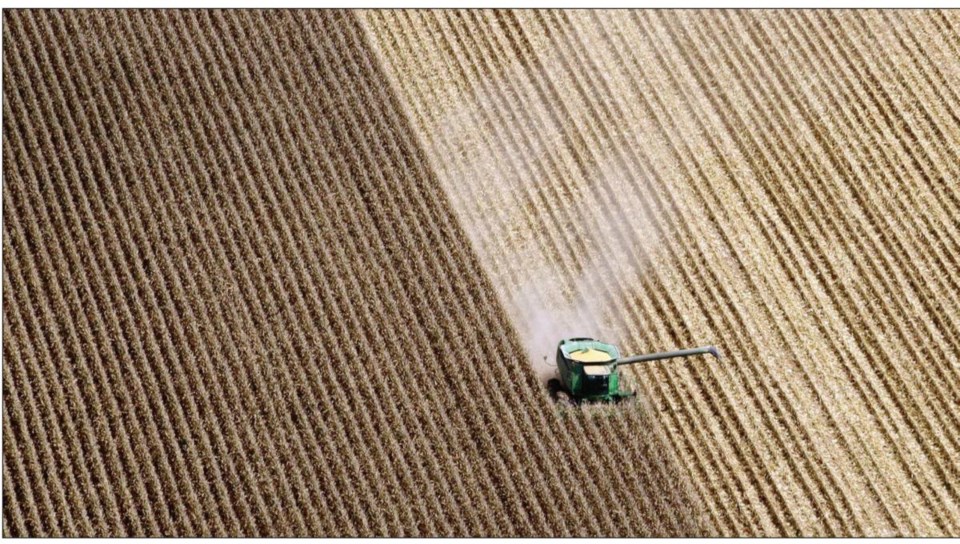One of the worst growing seasons most U.S. farmers can remember is coming to an end with a corn harvest that's at least three weeks early thanks to an unusually warm spring and suffocating summer.
The U.S. Department of Agriculture said in its weekly crop report that four per cent of the corn harvest is complete. Normally, just one per cent of the crop is in at this point in August.
The harvest is much farther along in states such as Kansas, Missouri and Tennessee. While farmers usually have to wait for the corn in their fields to dry or spend money on gas and electricity to dry it with huge blowers, in many areas, triple-digit summer temperatures have done the work.
The USDA predicted a record harvest in the spring, when farmers planted 96.4 million acres of corn - the most since 1937. But the agency has been reducing its estimate since then as unusual heat disrupted pollination and a severe drought centred over the middle of the U.S. left stalks stunted and ears bare. It now says it expects the least amount of corn since 2006, although the tally won't be certain until the harvest is done.
In Kansas, the harvest is 17 per cent complete, compared to three per cent at this time last year. Bob White, a statistician with the National Agriculture Statistics Service office in Topeka, said farmers are now expected to average 93 bushels per acre, com-pared to 107 last year. Both harvests were far below the record 155 bushels per acre Kansas farmers got in 2009.
The soil statewide is very short on moisture, he said, and it's reflected in the harvest. "Kansas producers have consistently seen since June high temperatures over 100 degrees, and at the same time have gotten limited amounts of rainfall," he said.
The harvest is even further along in Missouri and Tennessee at 18 per cent complete.
In Iowa, the nation's leading corn producer, Tom Albaugh said he probably won't begin harvesting until early September, but that would still be two to three weeks early in his area about 25 kilometres north of Des Moines.
He's expecting about 125 bushels per acre, instead of the 200 bushels he got in the past few years.
He pulled an ear off and peeled back the husk revealing a bright, golden ear about nine inches long with mostly plump kernels. The top inch, however, tapered off with kernels that never developed. It's a condition called tipping back, in which the corn plant shuts down the production of kernels when drought hits during pollination or as ears are developing. Some ears are tipped back about a quarter of the way, he said.
Another ear pulled from a stalk in the same row was about two inches shorter, and fewer than half had fully developed kernels. A few other ears were black with almost no kernels.
"There's going to be some that's worse. Some get disease. Out of that you will have empty ears," Albaugh said.
"I'm not saying we're going to just be devastated with no crop, but ... You won't get a consistent steady yield throughout the field."



